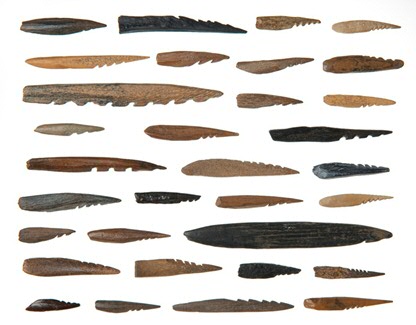Material culture

The creation and use of all sorts of tools and other objects is intrinsic to human existence. Just how these looked like and were made, is strongly related to the requirements of life, the availability of raw materials, but certainly also to what people believed, as well as cultural traditions. The study of these artefacts makes it possible to gain insight in these various aspects. The North Sea has delivered thousands of objects, representing production waste, tools, but also ‘jewellery’ and ‘art’.
A large number of artefacts consists of projectile points and other items, such as adzes, made out of bone and antler. As it appears that (red) deer was an important resource for the production of tools, next to food and hides, but also seem to have played an important role in the belief system of hunter-gatherers, bone and antler artefacts will be studied from the perspective of human-deer relationships. By reconstructing ‘biographies’ of the various artefacts through the study of production and use-wear traces, we will deepen our insights in such relationships. Other tools are made out of flint and other types of rock, and will be studied in comparison to what is known from on-land archaeological sites. This not only permits to gain insight into cultural traditions in Doggerland, but also to evaluate how these are connected to traditions identified thus far in regions surrounding the present-day North Sea.
| Last modified: | 31 May 2021 11.17 a.m. |
